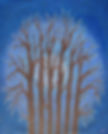What is Pointillism?
- jonathan-pradillon
- Jul 19, 2023
- 3 min read
Updated: Oct 29, 2024
Pointillism, an artistic movement in painting, is based on a pictorial technique that uses small areas of juxtaposed colour rather than a mixture of colours. This approach, which had been around since at least the 16th century, was developed in the 1880s by Georges Seurat, and critics referred to it, rather pejoratively, as pointillism. Paul Signac theorised it as "divisionism".
For a few years, Signac's process and theory appealed mainly in France and Belgium to painters such as Camille Pissarro, Maximilien Luce and Théo van Rysselberghe, who were classified in an artistic movement known as "neo-impressionism". This artistic movement grew out of both Impressionism and the optical research of Michel-Eugène Chevreul, as well as the writings of Charles Blanc. However, it also provoked the sarcasm of Paul Gauguin.
The emergence of pointillism
Pointillism, an innovative 19th-century artistic movement, was born out of the encounter between science and art. It was shaped by artists such as Georges Seurat and Paul Signac, and marked a turning point in the history of painting. In this article, we explore how Pointillism emerged and developed as an artistic movement in its own right.
The origins of Pointillism can be traced back to the beginnings of brushstroke painting, a technique already in use in the sixteenth century. However, it was in the 1880s that Georges Seurat developed it into a well-defined system. His monumental painting "Un dimanche après-midi à l'Île de la Grande Jatte," exhibited in 1886 at the last Impressionist exhibition, is regarded as the manifesto of the nascent movement.
Pointillism was distinguished from traditional colour-mixing techniques by the use of small, juxtaposed areas of pure colour. Paul Signac, a fervent supporter of the movement, theorised this approach as "divisionism." This theory was based on a scientific view of colour and contrast, asserting that placing colour in the middle of the chromatic ray, from white to black, gives it maximum saturation, power and beauty.
The creation of the Société des artistes indépendants in 1884 brought together Seurat, Signac, Camille and Lucien Pissarro, as well as a small group of followers who shared their artistic vision. They were nicknamed the "Neo-Impressionists," although the term was initially used rather pejoratively by the art critic Félix Fénéon.
Pointillism quickly conquered the art scene, particularly in Belgium thanks to Émile Verhaeren, who invited Seurat to exhibit in Brussels alongside the luminist École de pointillisme de Paris (EPP). The movement then spread to Germany thanks to Henry Van de Velde.
After Georges Seurat's untimely death in 1891, Paul Signac took over the movement and continued to develop it. Neo-Impressionist artists explored different ways of painting, notably by using larger brushstrokes.
At the end of the nineteenth century, pointillism gradually gave way to other artistic movements. Nevertheless, its influence was felt by artists such as the Fauves, the German Expressionists and the precursors of abstraction, making a lasting mark on the history of art.
Pointillism is a remarkable artistic movement that emerged from the meeting of scientific rigour and artistic expression. It revolutionised the way people painted and left a lasting legacy in the development of modern art. Even today, Pointillism continues to inspire and fascinate artists and art lovers the world over.
FAQ on Pointillism
1. How does pointillism work?
Pointillism is based on small dots of color placed close together. When viewed from a distance, the dots blend in the viewer's eye, forming shapes and colors.
2. What is the difference between pointillism and impressionism?
Pointillism uses only small dots of pure color, applied precisely. Impressionism, however, is freer with brushstrokes that are often blended directly on the canvas.
3. Who invented pointillism?
Georges Seurat is considered the founder of pointillism. He developed this technique in the 1880s, and Paul Signac was another major artist who adopted and further developed it.
4. What role does color play in pointillism?
Color plays a central role in pointillism. Instead of mixing colors on the palette, artists place pure color dots side by side. The viewer’s eye blends them optically, creating a unique brightness and intensity.
5. Does pointillism still influence artists today?
Yes, many artists are inspired by pointillism, especially in digital art. The technique has also influenced modern visual effects, such as pixel art and certain digital artworks.
7. Is pointillism difficult to create?
Yes, it’s a technique that requires a lot of patience and precision. Each dot must be applied carefully, making the process time-consuming. However, the result is often spectacular.
8. Why are colors applied without mixing?
Colors are applied in separate dots so that the eye can blend them optically. This creates a luminosity and depth that is different from directly mixing pigments on the palette.
9. Can pointillism be used with other mediums besides painting?
Yes, the technique of pointillism can also be applied in drawing, collage, and even digital art. In photography, a similar effect can be achieved by using pixels to recreate the style of pointillism.

